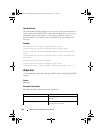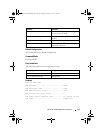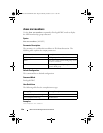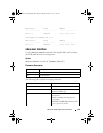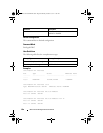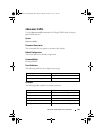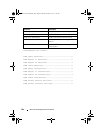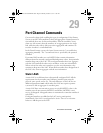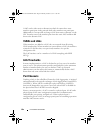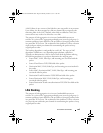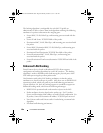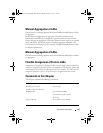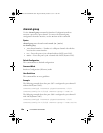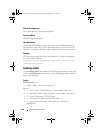
624 Port Channel Commands
A LAG can be either static or dynamic not both. It cannot have some
members participate in the protocol while other members not participate.
Additionally, it is not possible to change a LAG from static to dynamic via the
CLI. You must remove the member ports from the static LAG and then add
them to the dynamic LAG.
VLANs and LAGs
When members are added to a LAG, they are removed from all existing
VLAN membership. When members are removed from a LAG, the members
rejoin the VLANs that they were previously members of as per the
configuration file.
The LAG interface can be a member of a VLAN complying with IEEE
802.1Q.
LAG Thresholds
In many implementations, a LAG is declared as up if any one of its member
ports is active. This enhancement provides configurability for the minimum
number of member links to be active to declare a LAG up. Network
administrators can also utilize this feature to automatically declare a LAG
down when only some of the links have failed.
Port Channels
Trunking, which is also called Port Channels or Link Aggregation, is initiated
and maintained by the periodic exchanges of Link Aggregation Control PDUs
(LACPDUs). When LACP is enabled for a physical interface, LACPDUs
must not be dropped for any reason. Conversely, when LACP is disabled for
the physical interface LACPDUs must be dropped.
From a system perspective, a LAG is treated as a physical port. A LAG and a
physical port use the same configuration parameters for administrative
enable/disable, port priority, and path cost. When a physical port is
configured as part of a LAG, it no longer participates in forwarding operations
until the LAG becomes active.
2CSPC4.XCT-SWUM2XX1.book Page 624 Monday, October 3, 2011 11:05 AM



